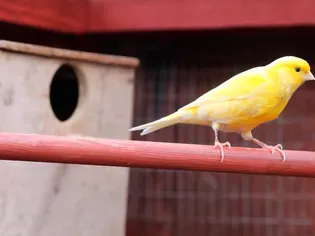Blue and Gold Macaw: Bird Species Profile
Updated on 05/27/24

Discover the Majestic Blue and Gold Macaw: A Comprehensive Bird Species Profile
Embark on an enchanting journey into the extraordinary world of the Blue and Gold Macaw (Ara ararauna), a striking and captivating bird species native to the tropical rainforests of South America. In this comprehensive blog, we delve into the captivating world of these magnificent macaws, unfolding their unique characteristics, fascinating behaviors, and essential knowledge for their well-being.
Captivating Appearance
The Blue and Gold Macaw is an undeniably stunning bird, renowned for its vibrant coloration. Its primary plumage is a brilliant electric blue, which fades into a deep sapphire at the tips of its long tail feathers. The underside of its wings and body features a contrasting golden hue, creating an eye-catching contrast that makes this species instantly recognizable. The macaw's beak is sturdy and black, capable of cracking nuts and seeds with ease.
Impressive Size and Strength
These majestic parrots are among the largest of their kind, with an average body length of around 80-95 centimeters and a wingspan that can reach an impressive 120 centimeters. Their powerful beaks and muscular bodies grant them exceptional strength, enabling them to maneuver through dense rainforest canopies with agility.
Distinctive Vocalizations
The Blue and Gold Macaw is known for its distinct and vocal nature. Its loud, raspy calls can be heard echoing through the rainforest, serving various social purposes. These calls are used for territorial defense, mate attraction, and communication within flocks.
Intelligence and Playfulness
Macaws are renowned for their exceptional intelligence and playful personalities. They possess advanced cognitive abilities, including problem-solving skills and object manipulation, which they often display through playful behaviors. These birds enjoy interactive toys and games, making them engaging companions for experienced bird enthusiasts.
Diet and Foraging Habits
Blue and Gold Macaws are primarily frugivorous, but they also consume nuts, seeds, flowers, and insects. Their strong beaks allow them to crack open hard-shelled fruits and seeds, providing them with essential nutrients. They are skilled foragers and spend a significant portion of their day searching for food.
Social Structure and Breeding
These parrots exhibit a complex social structure, living in monogamous pairs that typically bond for life. They nest in tree cavities, and females lay clutches of 1-3 eggs. Both parents share incubation and chick-rearing responsibilities, ensuring the survival of their offspring.
Habitat and Geographic Range
Blue and Gold Macaws inhabit the tropical and subtropical rainforests of Central and South America, particularly in countries such as Bolivia, Brazil, Paraguay, and Argentina. They rely heavily on these forest ecosystems for food, nesting sites, and protection from predators.
Conservation Status and Threats
Like many parrot species, Blue and Gold Macaws face various threats to their survival. Habitat loss due to deforestation, illegal pet trade, and climate change have contributed to population declines. Conservation efforts, including the establishment of protected areas and education campaigns, are crucial for ensuring the longevity of this magnificent species.
Care and Captive Breeding
Blue and Gold Macaws require specialized care in captivity. They need spacious enclosures, a stimulating environment, and a balanced diet. Providing them with appropriate enrichment activities is essential for their well-being. Captive breeding programs play a vital role in maintaining genetic diversity and ensuring the survival of this species outside its natural habitat.
Conclusion
The Blue and Gold Macaw is a captivating bird species that symbolizes the vibrant beauty of the rainforest ecosystem. Its stunning appearance, impressive size, and engaging personality make it a captivating subject of observation and admiration. As we continue to unravel the secrets of this extraordinary bird, let us remain committed to protecting its habitat, ensuring its future, and appreciating the wonders of our natural world.
Explore More Pets

Small Bird Breeds
Gloster Canary: Bird Species Profile

Small Bird Breeds
Java Finch: Bird Species Profile

Small Bird Breeds
Zebra Finch (Chestnut-Eared Finch): Bird Species Profile

Small Bird Breeds
Alexandrine Parakeet: Species Characteristics & Care

Small Bird Breeds
Canary: Bird Species Profile

Small Bird Breeds
Lovebird (Pocket Parrot) Species Profile

Small Bird Breeds
A Guide to Pet Budgie Birds

Small Bird Breeds
Types of Small Parrots
